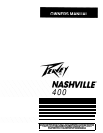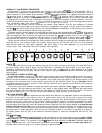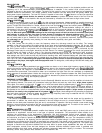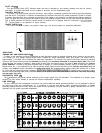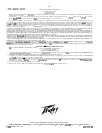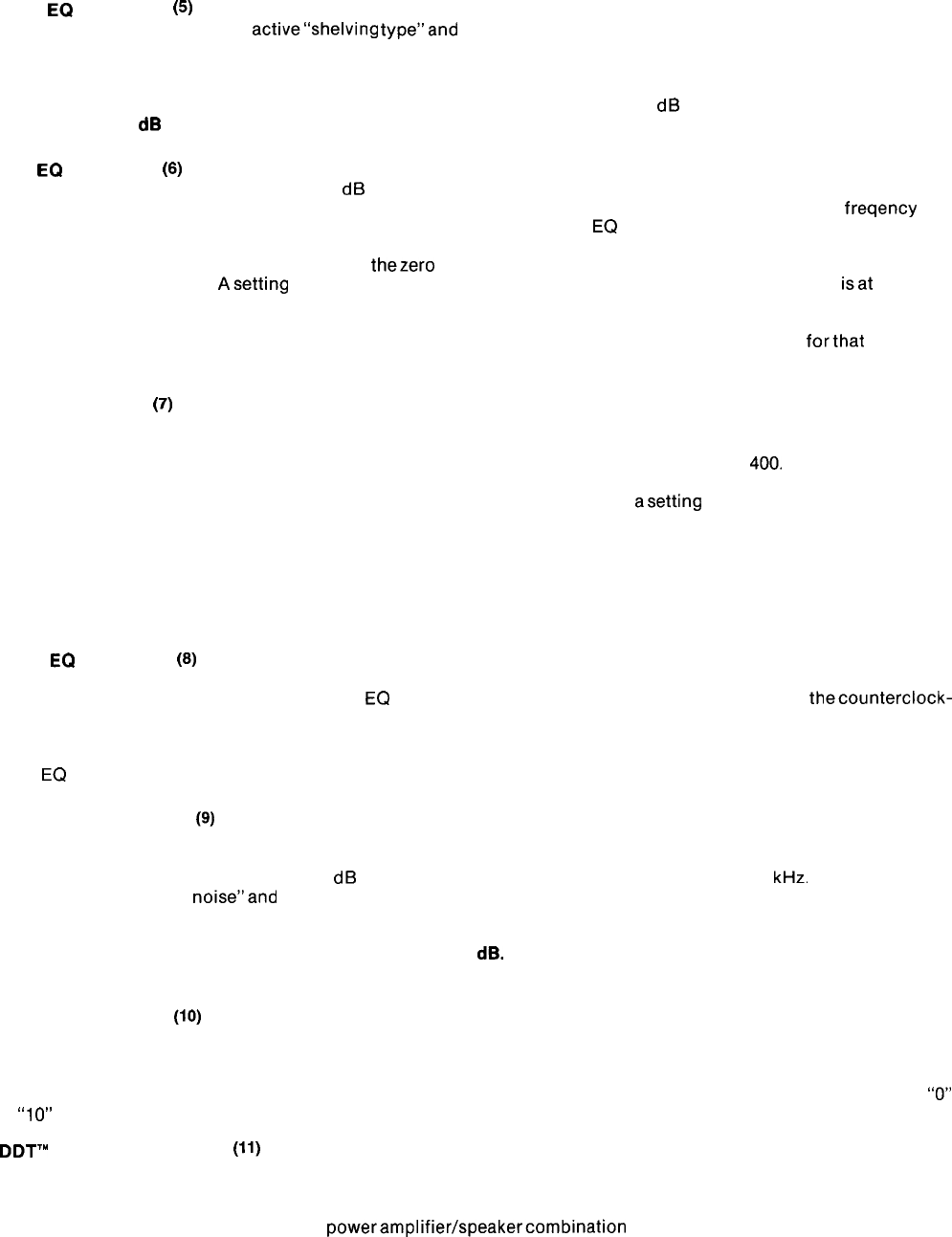
EQUALIZATION
LOW
EQ
CONTROL
(8)
The Low EQ Control is of the
active”shelving
type”and
provides lowfreqency boost in the clockwise positions and low
frequency cut in the counterclockwise positions. Flat response is obtained in the vertical 12:00 o’clock position, as
indicated by the zero in the center of the rotation. The action of this control is more or less conventional and no operational
problems should be encountered. You should, however, avoid excessive low end boost since this greatly affects your
amps power reserve (headroom). The Low EQ Control is capable of more than 15 dB of boost or cut and you should be
aware that
each 3
dB
of boost doubles the amount of power necessary
to produce the desired amount of low end. Even the
200 watt RMS capability of the Nashville 400 may be overloaded by excessive low end boost at high volume levels.
MID
EQ
CONTROL
(8)
This control enables a boost or cut of 15 dB in the vital mid-range frequencies. Added versatility is possible because of
the ability to vary the operating center point throughout the mid-range from 150 Hz to 1500 Hz by use of the
freqency
shift
control. The Mid EQ Control works in a similar manner to the Low and High
EQ
Control and should present no operational
difficulties. Clockwise settings increase “fat” mid-range frequencies and counterclockwise settings will result in a
“thinnersound” with less mids apparent. Notice
thezero
position at 12:00 o’clock will indicate no change is taking place to
the mid-range frequencies.
Asetting
of zero will renderthe Mid Control ineffective, because the mid-range
isat
that point
totally flat. Most steel guitar equalization settings for the mid-range control will be from minus 3 to minus 9 usually and
these settings, of course, will vary from player to player because of technique and outboard equipment used.
Patch cords,
volume pedals, effectsdevices, guitar pickups, etc., all tend to have someeffect on overall tonality and
forthat
reason we
are not usually able to give a “cookbook” set of equalization settings for any particular instrument. Experience has proven
that mid-range cut is generally more pleasing for most instruments (especially steel guitar and fiddle).
SHIFT CONTROL
(7)
The Shift Control has the ability to move the frequency where the mid-range control has its effect. The “sweep”
capability of the shift can position the middle control at any point along thefrequencyspectrum between 150 Hz and 1500
Hz. This is a wider range than was included with the Shift Control in our older model Session@
400.
Please be aware that
the Shift Control works in conjunction with the Mid-range Control and any conditioning that is performed by the
Mid-range Control may be, once again, altered by the Shift Control. For instance,
asetting
on the minus (cut) position with
the Mid Control will create a dip or a notch in the mid-range response and the shift can relocate this notch anywhere
between 150 Hz and 1500 Hz. With this notch preselected with the Mid-range Control you will notice that counterclock-
wise settings near 150 Hz with the shift will yield thinner sounding mids, while clockwise settings will yield fatter sounding
mids. Note also that just the opposite effect is possible when you select a boost with the middle control and rotate the shift
from 150 Hz to 1500 Hz. Most steel guitar players will adjust their Shift Control in the area between 600 Hz and 800 Hz
depending on the player, once again, and the equipment used. For lead guitar, a shift setting of 300-500 will usually yield
best results.
HIGH
EQ
CONTROL
(6)
This control is of the active peak/notch type and provides true boost or cut in lower high frequency ranges (2 KHz). As
with the low and the middle controls, the high
EQ
produces boost in the clockwise positionsand cut in
thecounterclock-
wise settings while flat response is obtained in the vertical (12:00 o’clock) position. The action of this control is
conventional but pronounced. Care should be taken not to overboost the highs since this can contribute an unpleasantly
harsh response as described above. Notice also that there will be a slight interaction between the Shift Control and the
High
EQ
Control when the shift is operated up near 1500 Hz because this places the middle control and the high control
very close to each other along the frequency spectrum.
PRESENCE CONTROL
(9)
The Presence Control has been brought forth from the Session@ 400which was one of our first amplifiers to include this
high frequency element. The control is a conventional rotary type device, but acts very much like a bright boost system.
Once again, this control is active with 15 dB of cut or boost and takes effect at approximately 5
kHz.
Extra brightness,
which emphasizes “pick
noise”and
extreme silky highs, may be added with this Presence Control in the boost position. If
your preference in tonality is without any additional “sizzle” on the top end then you may require the Presence Control to
be operated on the minus or counterclockwise position. Most guitar applications require a slight amount of presence
boost but it is usually in the neighborhood of only about 3
dB.
Once again, these settings will vary according to equipment
used and player technique. Please be aware that additional high frequency boost may be obtained with the “Pull Bright
Control” (see explanation for “Pre Gain/Pull Bright”).
REVERB CONTROL
(10)
The Reverb Control determines the amount of delayed (reverb) signal mixed back into the output and its operation is
conventional. In addition, the reverb may be switched on and off through the use of a remote footswitch. This footswitch
patches into the back panel footswitch input jack and is conventional in operation. We have included a new reverb circuit
featuring a current source drive together with the new Accutronics three spring reverb unit. The action of this control is
“0”
to “10” and should provide more than enough reverberation for most any situation.
DDT’”
COMPRESSION LED
(11)
The Nashville is a compact and powerful amplifier that features a 210 watt RMS power amp (at 4 ohms) with a full
compliment of equalization controls and a new type of dynamic compression. The compression effect enables us to
maximize the performance of the amp/speaker combination. We have determined through much research that the
compression circuitry should prevent the
poweramplifier/speakercombination
from running out of headroom (clipping)
and should be as simple to operate as possible to avoid undue complications for the user. Our compression circuitry is
very effective. Because of the dynamics and the percussive nature of plucked strings, it is quite common to activate the
compression as indicated by the limit LED at reasonably low output levels. One should not be concerned that the limit LED
indicates compression virtually constantly during a performance, since this is what it was designed to do. The system was
designed to maximize the dynamics available from the amp within its power output capabilities. We have not included
other compression controls since we have designed an exclusive distortion detection system which is patented and
senses conditions that might cause overload and activates compression only when clipping is imminent. This technique
effectively utilizes every precious watt available from the Nashville 400.



